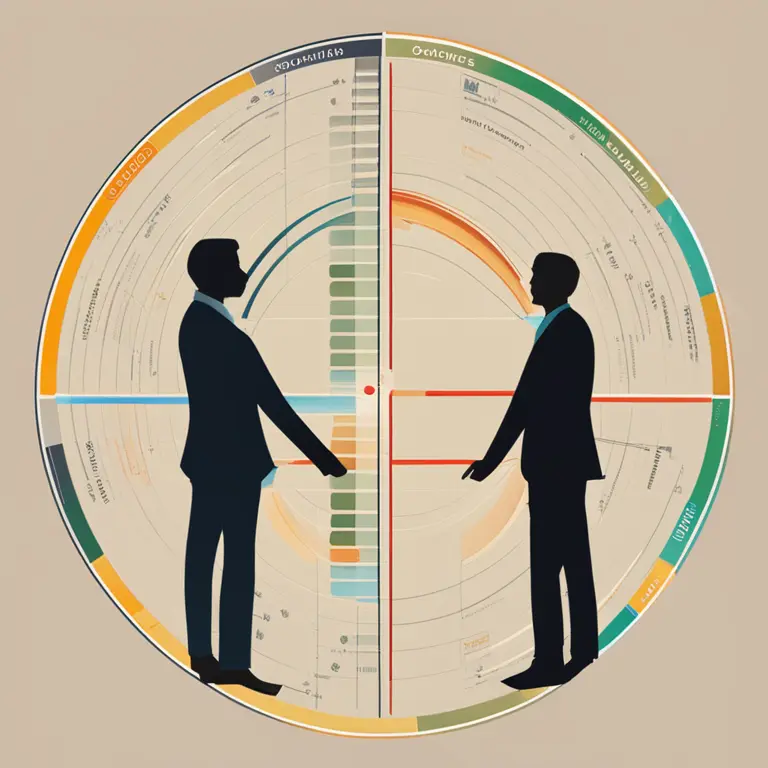
The Intricacies of Biorhythm Compatibility
Delve into the concept of biorhythm compatibility and discover how it can influence personal relationships and well-being.
article by Adrian Wallace
Introduction to Biorhythm Compatibility
Biorhythm theory suggests that our lives are influenced by natural mathematical cycles affecting our physical, emotional, and intellectual well-being. Biorhythm compatibility, a less familiar facet, gauges the harmonic or discordant alignments of these cycles between individuals. It is based on the idea that by comprehending our biorhythmic patterns, we enhance our interpersonal connections. By determining how the cycles line up, one can potentially predict the dynamics of relationships and personal interactions. As we move beyond 2024, biorhythm compatibility continues to intrigue those seeking deeper connection insights.

A Closer Look at Biorhythmic Cycles
There are three primary cycles in biorhythm theory: the physical (23 days), the emotional (28 days), and the intellectual (33 days). Each cycle is thought to oscillate between high, low, and critical phases, impacting our experiences and capabilities. Compatibility comes into play when the cycles of two individuals are analyzed in tandem. A harmonious phase alignment might denote a period of increased understanding and collaboration, whereas mismatched cycles could signal times of potential friction or misunderstandings. These concepts, while not scientifically proven, offer a unique perspective on human relations.

Calculating Biorhythm Compatibility
To calculate biorhythm compatibility, one needs the birth dates of the individuals involved. Various online calculators and software, updated to include trends and data from 2024 and beyond, can compute the cycles and visualize their intersections. The compatibility assessment examines how often and closely the high and low phases of each person's biorhythm cycles align. Proponents theorize that the greater the alignment, the stronger the compatibility, leading to more synchronized and effortless interactions.

Biorhythms in Personal Relationships
In personal relationships, understanding biorhythm compatibility is said to offer valuable insights. Partners with synchronized cycles might find more harmony in their interactions, while those with frequently opposing cycles could experience recurring challenges. Advocates of the theory believe that being aware of these patterns allows couples to better navigate the ebbs and flows of their relationship, planning for periods of potential tension with greater foresight and developing strategies to bolster communication and empathy.

Biorhythm Compatibility in Professional Settings
Outside of personal relationships, biorhythm compatibility also finds its application in professional environments. Team dynamics can benefit from an understanding of member's biorhythmic patterns, potentially enhancing group synergy and productivity. Some companies integrate these insights into team-building strategies, although this practice remains controversial and far from mainstream acceptance. Nevertheless, it highlights the versatility of biorhythm theory outside the realm of personal intimacy.
The Critical View and Future of Biorhythm Theory
As with many pseudoscientific theories, biorhythm compatibility faces skepticism from the scientific community. Critics point out the lack of empirical evidence and the tendency for generalized predictions that could apply broadly, a concept known as the Forer effect. Despite this, the fascination with biorhythms persists, and as we venture deeper into the age of personal analytics, new technologies may emerge that explore these rhythms with greater precision, keeping the concept of biorhythm compatibility a topic of interest for years to come.
Published: 1/30/2024
Modified: 1/30/2024
More predictions
Come back here soon to learn more about yourself and your future


The Rhythms Within: An Introduction to Biorhythm Cycles
Learn about the intriguing concept of biorhythm cycles and how they may influence your daily life in physiological, emotional, and intellectual domains.


The Rhythms of Life: Decoding Your Biorhythm Cycles
Discover the science of biorhythm cycles and how they influence your physical, emotional, and intellectual states through life's natural rhythms.


Biorhythm Calendar: Your Personal Cycle Guide
Delve into the personalized world of biorhythms to comprehend your physical, emotional, and intellectual cycles for a harmonized life.